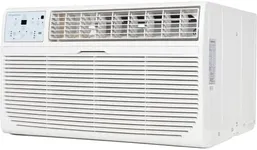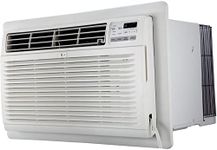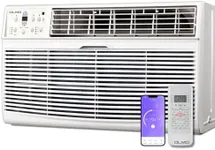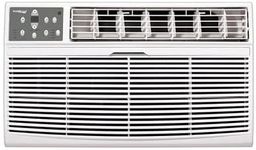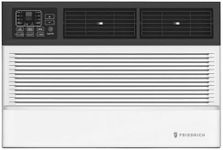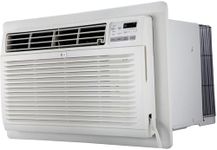Buying Guide for the Best In Wall Ac Units
In-wall air conditioning units are a great solution for cooling individual rooms or small spaces. They are installed directly into a wall, which saves window space and provides a more permanent cooling solution. When choosing an in-wall AC unit, it's important to consider several key specifications to ensure you select the best fit for your needs. Here are the key specs to look out for and how to navigate them.Cooling Capacity (BTUs)Cooling capacity is measured in British Thermal Units (BTUs) and indicates how much heat the unit can remove from a room per hour. This is important because it determines how effectively the unit can cool your space. Units with lower BTUs (5,000-8,000) are suitable for small rooms (100-350 sq. ft.), medium BTUs (9,000-12,000) are good for medium-sized rooms (350-550 sq. ft.), and higher BTUs (13,000-18,000) are best for larger rooms (550-1,000 sq. ft.). To pick the right one, match the BTU rating to the size of the room you need to cool.
Energy Efficiency Ratio (EER)The Energy Efficiency Ratio (EER) measures the efficiency of the air conditioner by comparing the cooling capacity (in BTUs) to the power input (in watts). A higher EER means the unit is more energy-efficient, which can save you money on electricity bills. EER ratings typically range from 8 to 12. For the best efficiency, look for units with an EER of 10 or higher. If you prioritize energy savings and environmental impact, choose a unit with a higher EER.
Noise LevelNoise level is measured in decibels (dB) and indicates how loud the unit will be when operating. This is important for maintaining a comfortable environment, especially in bedrooms or living areas. Noise levels for in-wall AC units typically range from 50 to 60 dB. Units with lower dB ratings are quieter. If you are sensitive to noise or plan to use the unit in a quiet space, look for models with noise levels below 55 dB.
Installation RequirementsInstallation requirements refer to the specifications and preparations needed to install the unit in your wall. This includes the size of the wall opening, electrical requirements, and any additional support structures. It's important to ensure that your wall can accommodate the unit and that you have the necessary electrical setup. Check the dimensions and installation guidelines provided by the manufacturer. If you are not comfortable with DIY installation, consider hiring a professional.
Additional FeaturesAdditional features can enhance the functionality and convenience of your in-wall AC unit. Common features include remote control, programmable timers, sleep mode, and adjustable fan speeds. These features can make the unit easier to use and more versatile. Consider which features are important to you based on your lifestyle and preferences. For example, a programmable timer can help you save energy by automatically turning the unit off when not needed.
